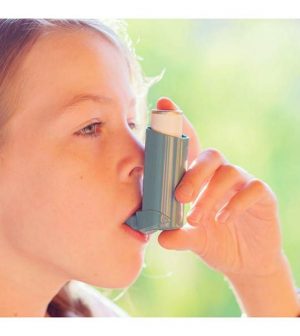- Skip Storing This Everyday Product in the Fridge Door
- Green Tea + B3 Pairing May Boost Brain Health
- Navigating Your Midlife Crisis: Embracing New Possibilities
- City Raccoons Showing Signs of Domestication
- Mapping the Exposome: Science Broadens Focus to Environmental Disease Triggers
- One Week Less on Social Media Linked to Better Mental Health
- Your Brain Changes in Stages as You Age, Study Finds
- Some Suicide Victims Show No Typical Warning Signs, Study Finds
- ByHeart Formula Faces Lawsuits After Babies Sickened With Botulism
- Switch to Vegan Diet Could Cut Your Greenhouse Gas Emissions in Half
Is Your Child at Risk for Asthma?

Family history, race and sex are among the factors that increase a child’s risk of asthma, a new study shows.
“These findings help us to better understand what groups of children are most susceptible to asthma early in life,” said study co-author Christine Cole Johnson, chair of public health sciences at Henry Ford Health System in Detroit.
“We can now use this information to develop interventions for those children at highest risk,” Johnson added in a Henry Ford news release.
Researchers analyzed data from more than 12,000 children who were born in the United States and Puerto Rico between 1980 and 2014 and followed at least until they turned 5.
Fifty-one percent were boys and 49% were girls, while 52% were white and 23% were black.
Rates of asthma were two to three times higher in children who had at least one parent with a history of asthma, mostly through age 4, than in other children.
Children with a family history of asthma had a two-fold higher risk of asthma at age 4 through age 14 compared to those without a family history.
At younger ages, boys with a family history of asthma had higher rates of asthma than girls. But by age 14, their rates were about the same. Black children had the highest rates of asthma regardless of a family history.
However, while asthma rates in Black children were much higher than white children during their preschool years, the rates fell in Black children after age 9, but increased for white children later in childhood.
The study was published May 17 in the journal JAMA Pediatrics.
“We hope the results of this study will be useful to both researchers and health care providers to better treat and ultimately even prevent asthma in children,” study co-author Dr. Aruna Chandran, of Johns Hopkins University Bloomberg School of Public Health, said.
About one in 12 U.S. children has asthma, according to the Centers for Disease Control and Prevention. It causes wheezing, difficulty breathing and coughing and can lead to permanent lung damage.
More information
The American Lung Association has more on asthma in children.
SOURCE: Henry Ford Health System, news release, May 17, 2021
Source: HealthDay
Copyright © 2025 HealthDay. All rights reserved.










